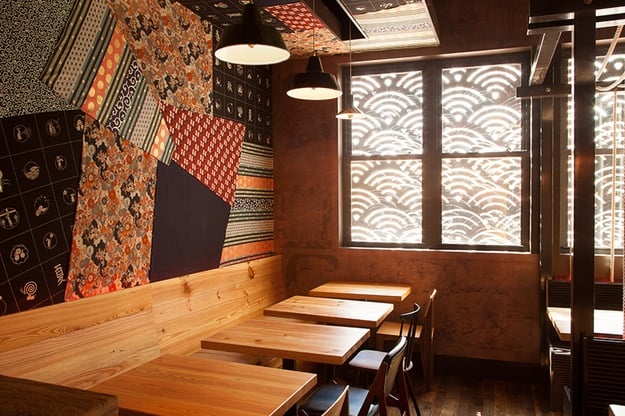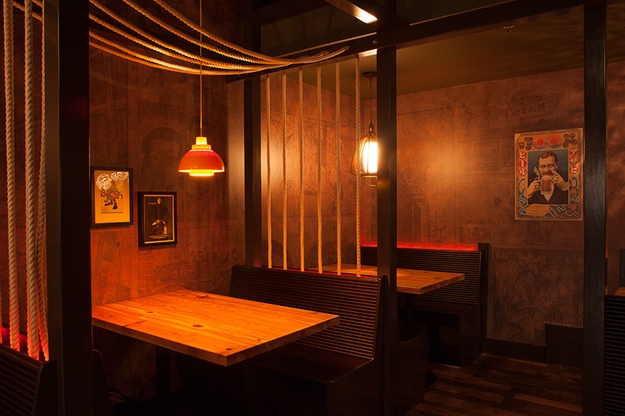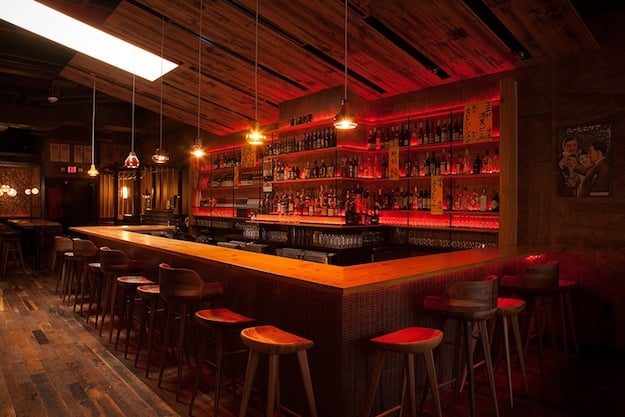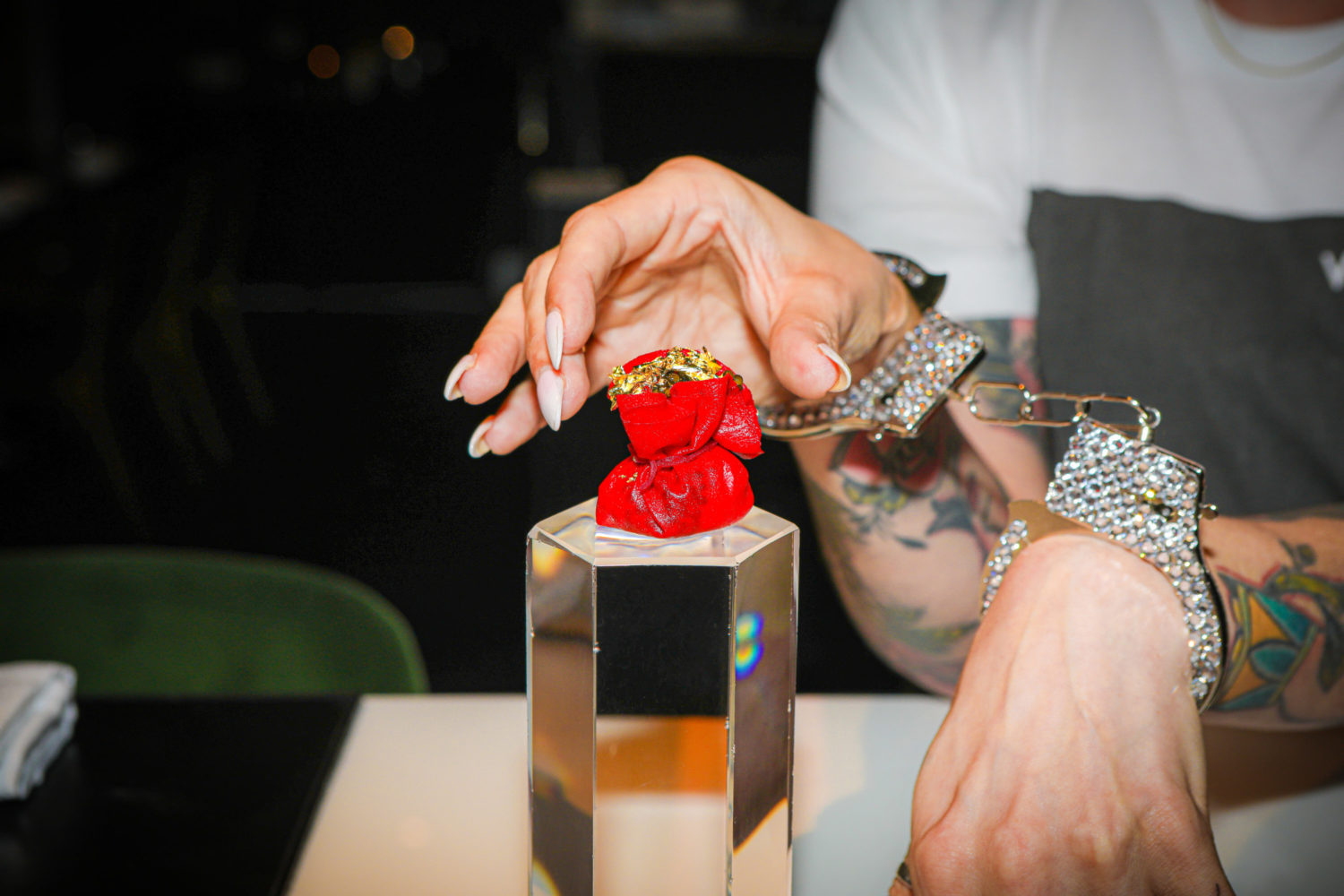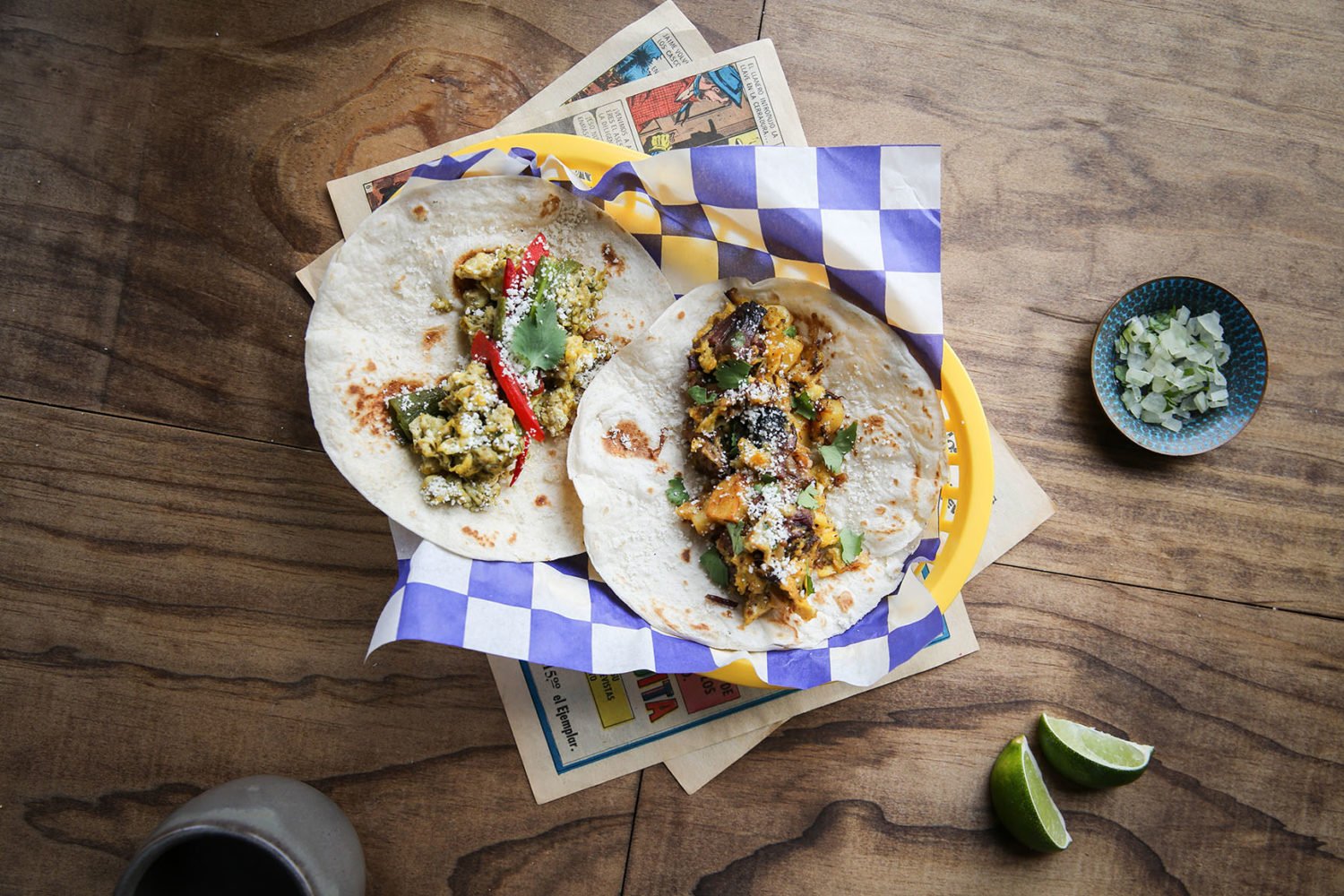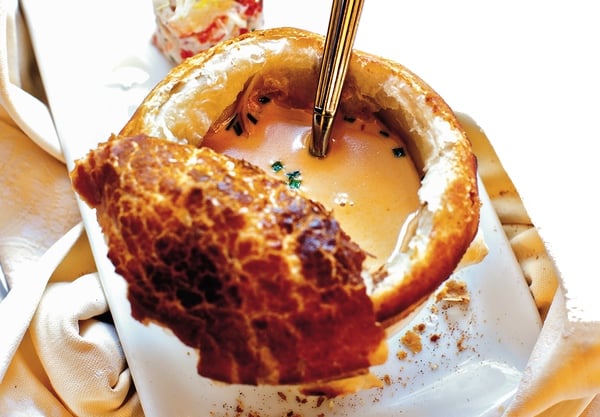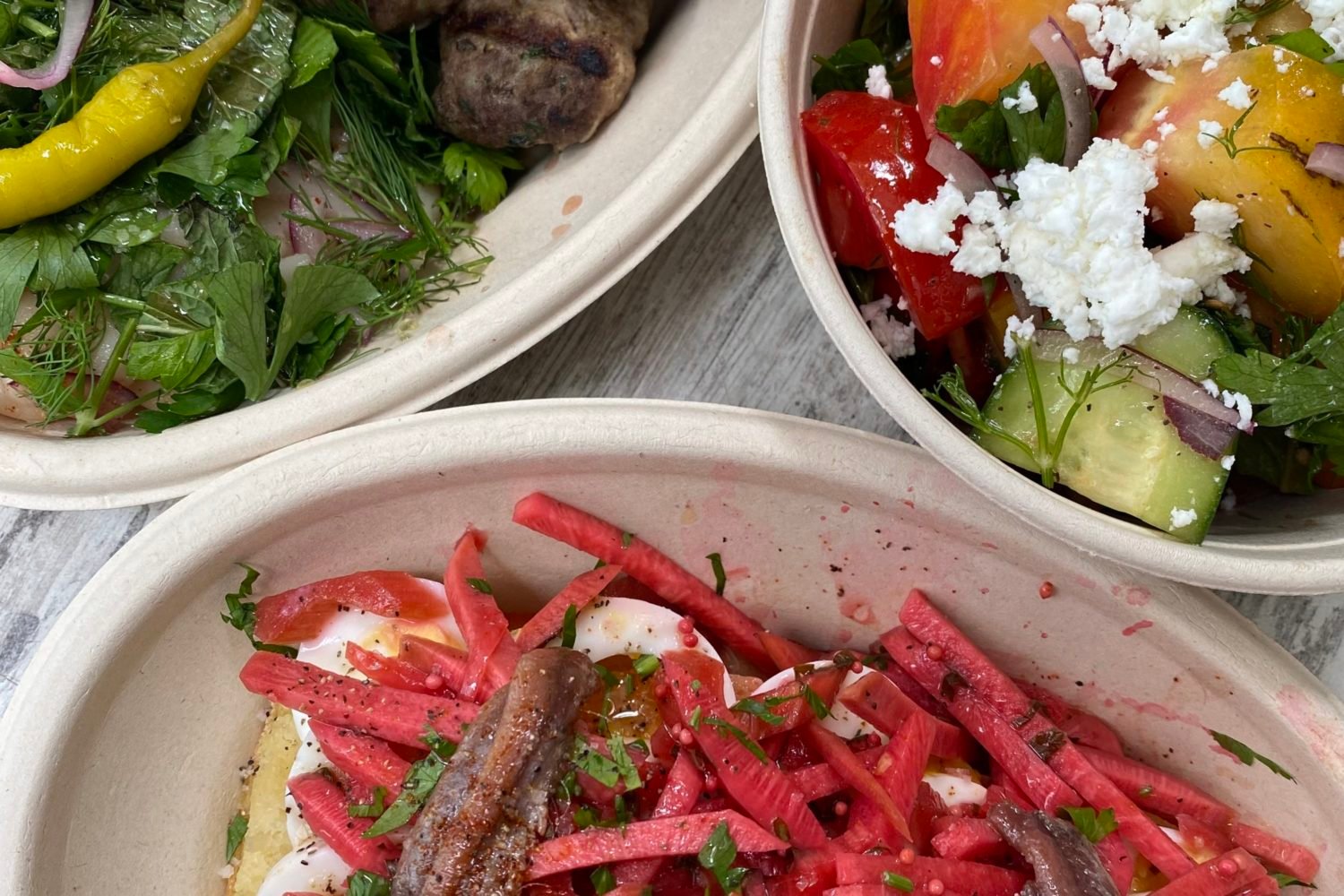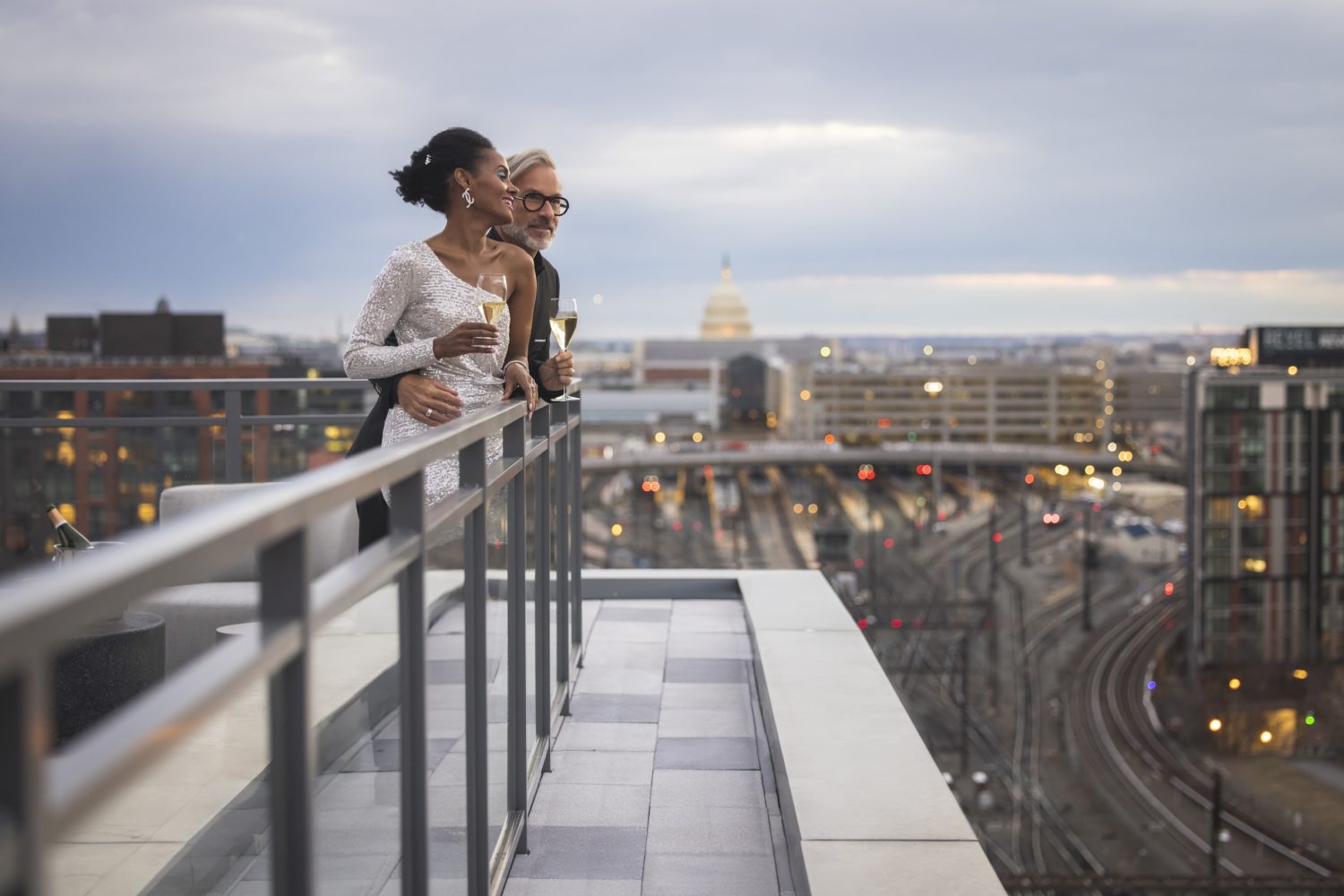Update: Daikaya Izakaya is now open.
The Chinatown ramen shop Daikaya
has only been open a few weeks, but already it’s attracting hourlong waits and even
one gentleman who traveled across the world
to slurp a bowl of noodles from chef
Katsuya Fukushima. Now the project—which Fukushima and fellow co-owners
Daisuke Utagawa and
Yama Jewayni literally built from the ground up over the course of several years—is nearly complete
with the imminent debut of a 90-seat
izakaya above the sidewalk-level eatery. True to the
izakaya concept in Japan, the space operates as both a bar and a restaurant—though you can
get anything from a light snack to a full meal (here’s the menu)—with the intention of becoming a neighborhood
gathering place. Here are five things to look for at the new spot, set to debut in
the coming days (we’ll keep you posted).
Molecular sake bombs
Don’t worry, you won’t find college students plunging rail sake into their beers.
Barman
Eddie Kim concocted a list of libations that’s playful and interesting to the cocktail connoisseur,
but designed so most drinkers can have a few without falling off one of the pine barstools.
A riff on the ubiquitous sake bomb arrives with spherified sake—Fukushima is a disciple
of
José Andrés and his spherified olives, after all—suspended in a glass of Sapporo. Other versions
Kim is playing with involve Averna, a herbaceous liqueur, with Duck Rabbit milk stout,
and Fernet Branca in local 3 Stars brew. Washington gets another shout-out in the
Rickey-San, a take on the District’s official cocktail with gin and green tea soda.
Vintage Japanese posters and manga on the walls
Designer
Brian Miller of Edit traveled to Japan with the Daikaya team for research before constructing
the space, which blends classic Japanese aesthetics—an emphasis on natural wood, traditional
patterns on the front window—with touches unique to the team’s vision. You’ll find
vintage beer and travel posters on the walls, intentionally mismatched chairs and
lanterns, and brightly quilted panels along certain portions of the wall to soften
the sound. Other sections display prints from Japanese food manga (comics).
Grilled oysters and frozen salmon
An
izakaya welcomes free-form dining, meaning your servers won’t open with “the chef recommends
six small plates a person.” You might snack on grilled, Gouda-stuffed shishito peppers
or fried turkey wings dusted with ginger, garlic, and scallions while throwing back
a few rounds of sake, and then, in true Japanese style, weave your way down to the
ramen shop for a quick bowl of noodles before heading home. Others could make a meal
of the small dishes, which include a few traditional items like miso-braised mackerel
or a type of frozen salmon sashimi from Hokkaido that literally melts in your mouth
after you dip it in tamari soy sauce. More common are Fukushima’s riffs on his native
cuisine, like oysters grilled with sake and house-made oyster salt,
chawanmushi (an egg custard) with shiitake mushrooms and Parmesan, and crab croquettes spiked
with Old Bay seasoning. You won’t find sushi; the closest thing to California roll
or a slice of fatty toro is grilled creamy avocado with ponzu sauce and freshly grated
wasabi.
Select reservations
The downstairs ramen bar remains walk-in only, and most of the
izakaya will be devoted to first come, first served customers. Still, a limited number of
reservations may be made up to a month out. Bigger parties will likely want to call
ahead.
Did we mention the booze?
First and foremost, Utagawa will tell you, an
izakaya is place to gather with friends over drinks. In addition to cocktails, beverage options
range from $9 warm “house sake” to a $150 bottle of Puligny-Montrachet Premier Cru
wine. The list of American and Japanese beers runs 45 deep—and includes an eclectic
mix of large-format bottles that range from Japan’s Orion to a sour cherry cider out
of New York—and the wine selection is nearly equally large. Sakes in both shareable
bottles and smaller sizes are divided by helpful flavor profiles like “aromatic and
fragrant” and “dry and crisp.” And of course, there’s a sizable amount of
shochu and Japanese whiskey for when the occasion calls for something more potent.
Daikaya Izakaya. 705 Sixth St., NW; 202-589-1600. Open Monday through Thursday 5:30
PM to 1:30 AM, and Friday and Saturday 5:30 PM to 2:30 AM. Food served Monday from
5:30 PM to 10 PM; Tuesday through Thursday 5:30 to 11; Friday and Saturday from 5:30
to midnight.
